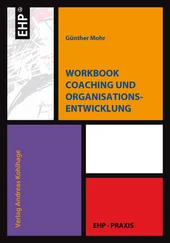Emergency Medicine Simulation Workbook
Здесь есть возможность читать онлайн «Emergency Medicine Simulation Workbook» — ознакомительный отрывок электронной книги совершенно бесплатно, а после прочтения отрывка купить полную версию. В некоторых случаях можно слушать аудио, скачать через торрент в формате fb2 и присутствует краткое содержание. Жанр: unrecognised, на английском языке. Описание произведения, (предисловие) а так же отзывы посетителей доступны на портале библиотеки ЛибКат.
- Название:Emergency Medicine Simulation Workbook
- Автор:
- Жанр:
- Год:неизвестен
- ISBN:нет данных
- Рейтинг книги:3 / 5. Голосов: 1
-
Избранное:Добавить в избранное
- Отзывы:
-
Ваша оценка:
- 60
- 1
- 2
- 3
- 4
- 5
Emergency Medicine Simulation Workbook: краткое содержание, описание и аннотация
Предлагаем к чтению аннотацию, описание, краткое содержание или предисловие (зависит от того, что написал сам автор книги «Emergency Medicine Simulation Workbook»). Если вы не нашли необходимую информацию о книге — напишите в комментариях, мы постараемся отыскать её.
Emergency Medicine Simulation Workbook
Emergency Medicine Simulation Workbook — читать онлайн ознакомительный отрывок
Ниже представлен текст книги, разбитый по страницам. Система сохранения места последней прочитанной страницы, позволяет с удобством читать онлайн бесплатно книгу «Emergency Medicine Simulation Workbook», без необходимости каждый раз заново искать на чём Вы остановились. Поставьте закладку, и сможете в любой момент перейти на страницу, на которой закончили чтение.
Интервал:
Закладка:
Available supplies:
Pediatric code cart and basic airway supplies, including supplies for intubation.
Pediatric length‐based tape.
Medications:IV fluid bags: 0.9% saline, lactated Ringer's solution (LR ), PlasmaLyte®.
Pre‐labeled bags:Vasopressors (e.g. norepinephrine, dopamine, vasopressin).
Pre‐labeled syringes:Dextrose (10 and 25%) in water.Morphine.Antiemetic.Antibiotics (broad spectrum).Intubation medications (sedatives and paralytics of choice at your facility).
IO device (optional).
Distractor(s): None.
Actors
Patient's parent provides history.
Emergency department (ED) nurse: can help to place the patient on monitor, obtain IV access (IO should be done by learners, if needed), and administer medications/fluids. May cue learners if needed.
Respiratory therapy (available when requested in ED).
Pediatric/neonatal intensive care (PICU/NICU) team member via phone consultation.
Pediatric surgery consultant via phone consultation.
Case Narrative
Scenario Background
A four‐week‐old preterm, female infant born by spontaneous vaginal delivery at 33 weeks of gestation, (birth weight 4 lbs (1.81 kg) presents to the ED for lethargy, decreased feeding, and vomiting with feeds. The patient was in NICU for four weeks but discharged to home three days ago. The patient's hospital stay was complicated by neonatal jaundice and temperature dysregulation, both of which were resolved prior to discharge. For the past two days, the patient's mother has noticed increased difficulty with feeding (formula fed), decreased PO intake, vomiting after feeds, and general sleepiness.
| Chief complaint: | Lethargy, decreased feeding, vomiting. |
| Patient's medical history: | Ex‐33 week, four‐day preemie (current age 37 weeks of gestational age, actual age 4 weeks 3 days). |
| Surgical history: | None. |
| Allergies: | None. |
| Medictions: | Vitamin D supplementation. |
| Social history: | Not in daycare, lives at home with mom; no siblings. |
| Family history: | None. |
Initial Scenario Conditions
Parent is holding the neonate. Patient has a weak cry.
| Vital signs: | T 102.4°F (39.1°C) rectal, HR 215, RR 60, BP 70/35, SpO 297% on room air. |
| Weight: | 2.7 kg. |
| Head: | Atraumatic, normocephalic, fontanelle soft. |
| Eyes: | Pupils 4 mm bilaterally and reactive to light. |
| Neck: | Supple, full range of motion, no meningismus. |
| Heart: | Tachycardic, regular, no murmurs/rubs/gallops. |
| Lungs: | Tachypnea, clear to auscultation bilaterally. |
| Abdomen: | Moderately distended with high‐pitched bowel sounds; patient screams when abdomen is palpated in all quadrants. No palpable masses. Dark black soft stool in diaper (hemoccult positive, if asked). |
| Extremities: | No gross deformities; warm extremities with capillary refill two to three seconds. |
| Skin: | Warm, no rashes, no mottling. |
| Neurologic: | Moves all extremities spontaneously; weak cry that increases with palpation of the abdomen. |
Physical exam findings that are not available on your mannequin may be offered verbally to learners if they ask (e.g., rectal exam and hemoccult testing can be reported if specifically requested by learners).
See flow diagram ( Figure 1.5) for further scenario changes described.
Case Narrative, Continued
During the initial minutes of the scenario, learners of all levels should collect a thorough history from the patient's parent/s and perform a complete physical exam. Initial lab tests and imaging studies should be ordered after this assessment is complete. All learners should request a heelstick glucose (prompted by the nurse if the learner fails to request it).
Over the next five minutes, the patient will deteriorate regardless of interventions, becoming less responsive with hypotension, increased respiratory rate, and hypoxia. Eventually, there will be episodes of bradycardia with short apneic episodes.
For novice learners, not trained to perform intubation on infants, the use of bag–valve mask ( BVM ) ventilation for supplemental oxygen will stabilize the patient until the NICU team arrives. They may consult anesthesiology as well.
For more advanced learners, intubation will be required because of impending respiratory failure and worsening lethargy.
If there is a delay in providing advanced airway interventions (BVM and/or intubation), the patient will progress into a pulseless electrical activity ( PEA ) rhythm and require cardiopulmonary resuscitation ( CPR ). After two minutes of appropriate pediatric CPR, the patient will regain pulses.
Advanced learners will need to initiate vasopressors for persistent hypotension. If the learners do not order vasopressors, the nurse may prompt them by mentioning that the blood pressure remains abnormally low and the full IV fluid bolus has already been given.
Once the airway and hypotension are addressed (or upon finishing CPR), the learners will receive any remaining results not yet reported. They should then communicate their concern for NEC with pediatric surgery as well as the NICU/PICU team for admission and intervention. The case will end upon appropriate consultation with these teams.
Instructor Notes
Epidemiology
NEC is more common in premature neonates:Only around 10% occurs in full‐term neonates.Higher risk in lower birth weights.Timing of onset is the inverse of gestational age (e.g. born close to term presents earlier postnatally than if born more prematurely).
Pathophysiology
Etiology unclear:Possibly related to intestinal ischemia with an immature gut barrier that predisposes to infectious agents.Cytokines and growth factor implicated in pathogenesis.Bacteria in intestinal lumen ferment carbohydrates and produce hydrogen gas that leads to pneumatosis and portal venous gas.
Clinical Features
Variable presentation.
Historical features:Increasing lethargy.Forceful/projectile vomiting.Presence of bloody or bilious vomit [1].
May present similar to sepsis:Hypo/hyperthermia, lethargy, apneic episodes, bradycardia, hypotension, poor glucose regulation.
Gastrointestinal signs/symptoms:Abdominal distension, bloody stools, vomiting, a palpable abdominal mass (intestinal loops) or abdominal wall redness or crepitus.Scrotal discoloration (males).
Differential Diagnosis for Vomiting Neonate
Gastrointestinal causes:Overfeeding.Gastroenteritis.Malrotation with midgut volvulus.NEC.Intussusception.Intestinal atresia.Gastroesophageal reflux.Pyloric stenosis.Hirschsprung disease.
Non‐gastrointestinal causes:Central nervous system diseases.Metabolic/endocrine disorders.Trauma.
Diagnosis
Laboratory abnormalities may include:Thrombocytopenia.Hyponatremia.Metabolic acidosis with elevated lactate.Neutropenia or leukocytosis.
Abdominal radiographs (anteroposterior and lateral) may show:Pneumatosis intestinalis.Portal venous gas.Non‐specific gas‐filled loops of bowel.
Management [2–5]
NPO.
Gastric decompression with an orogastric tube
Читать дальшеИнтервал:
Закладка:
Похожие книги на «Emergency Medicine Simulation Workbook»
Представляем Вашему вниманию похожие книги на «Emergency Medicine Simulation Workbook» списком для выбора. Мы отобрали схожую по названию и смыслу литературу в надежде предоставить читателям больше вариантов отыскать новые, интересные, ещё непрочитанные произведения.
Обсуждение, отзывы о книге «Emergency Medicine Simulation Workbook» и просто собственные мнения читателей. Оставьте ваши комментарии, напишите, что Вы думаете о произведении, его смысле или главных героях. Укажите что конкретно понравилось, а что нет, и почему Вы так считаете.












